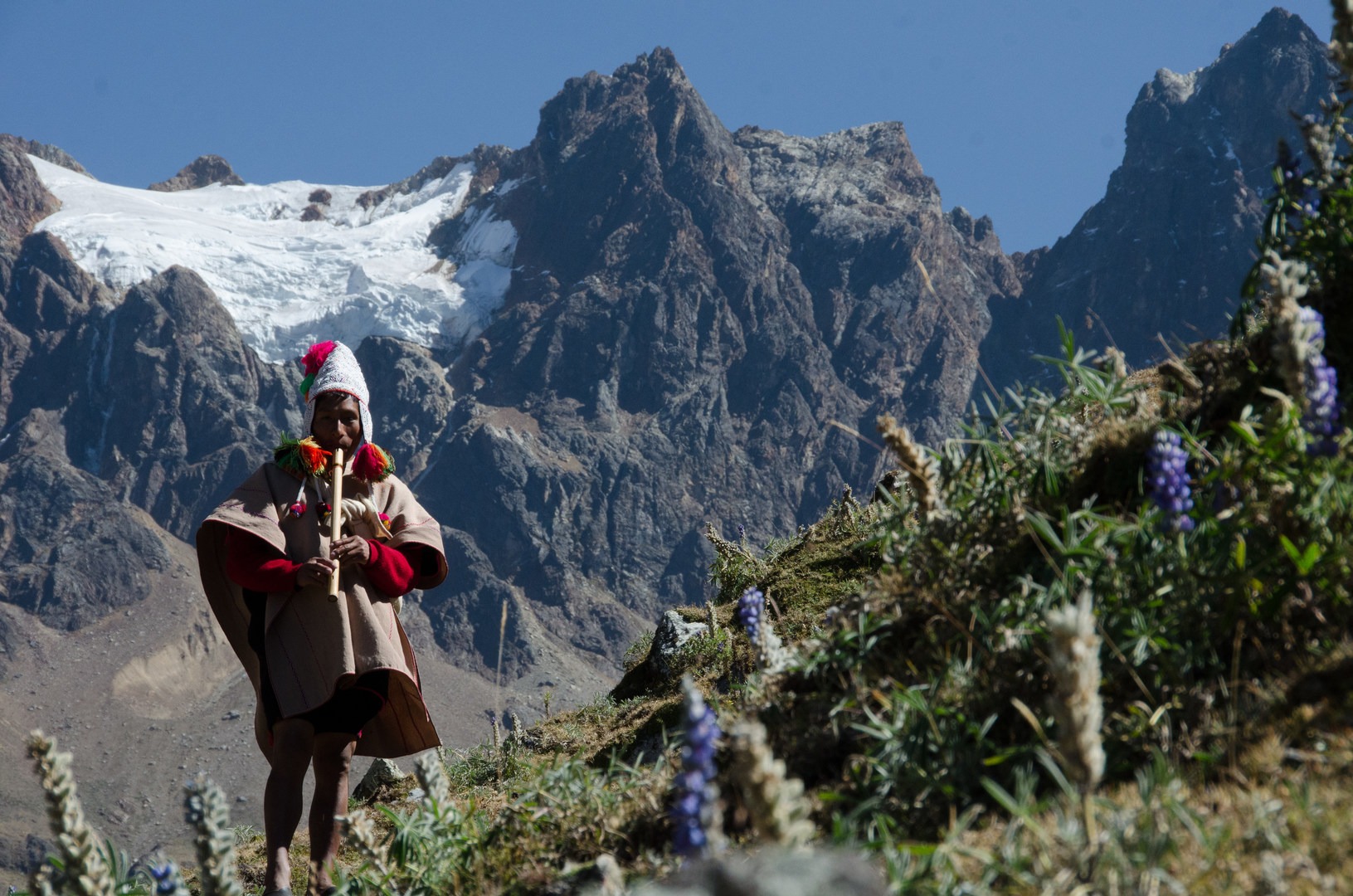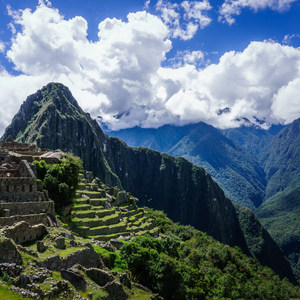You are here
Machu Picchu is undoubtedly one of the most recognizable places in the world. The classic picture of granite ruins perched precariously on a verdant ridge with the hulking Huyana Picchu are common to the point of ubiquity. Getting there can be a bit of challenge as it involves planes, trains and automobiles. Even those going for a day are required to take a Ollantaytambo or drive a short distance and take the short train or walk to Macchu Picchu’s town of Aguas Caliente. But for many there is a far more interesting adventure in walking much of the distance, following in the footsteps of those who once lived in the Incan empire.
The stone Inca roadways that connected Machu Picchu the Incan capital of Cuzco have exploded in popularity. This same popularity has forced the national park to carefully control the amount of people in an effort to reduce wear on the trail as well as to preserve the park itself.
In response to this, the Salkantay Trek, which uses sections of ancient Inca trails, has become the more travelled trail. It’s named for the largest peak it passes under. Both the Salkantay Trek and the Inca Trail routes are incredibley beautiful and equally interesting ways to get to the famous ancient city. Being almost entirely outside of the national park allows the many outfitters and the lodges to operate here with far greater numbers.
Getting there
Most people start their trip in Cuzco, the ancient Incan capital. It’s a lovely city in the Andean Highlands that is a wonderful destination in it’s own right. It’s highly recommended to spend at least two days in Cuzco because it sits at 3,700 meters above sea level. Unless you’re coming direct from Denver, it takes time to acclimatize to the altitude. The golden rule of acclimatization is: Take it slow and listen to your body. Forcing yourself to perform is dangerous, and it’s best to slow down and move consistently then it is to just push through. It’s a classic tortoise versus hare scenario.
From Cuzco you can book a shuttle that will take you to the trailhead and back. There are a few public transit options as well, but these require decent working knowledge of Spanish to navigate. I would recommend consulting the Rough Guide to Machu Picchu for more information.
Lodging and outfitting
Campsites and outfits abound, and they offer all kinds of services and styles of accommodation, from luxurious lodge trips with hot tubs and cozy rooms to tent camping with food shelters and horses portering your gear. You can book in advice, which is essential if you want to stay in the swank lodges. In the tourist area of Cuzco you will find many folks offering tours of all kinds. Be warned, if you’re looking to mostly go it solo, some of these establishments may give you less than accurate information. It’s worth doing your research prior to arrival.
For those looking to camp unsupported, there are options. In general it’s best to stay in campsites; while you can sometimes camp in wild spaces, it’s hard to tell if you are camping on private land because there is rarely good signage. This is generally frowned upon, so it is best to respect the locals and use the campsites. The main hubs for campsites are SorayPampa, Huairaspampa, Collapapampa, Sahuayaco, Llactapata, and Aguas Caliente, the town that serves Machu Picchu.
Food, fuel, and gear can be purchased in Cusco. All types of fuel, including isobutane, can be purchased at inflated prices. There are, of course, plenty of grocery stores. On the trail there is a small grocery store at the trailhead, and the next shop is in San Theresa, one day out from Aguas Caliente. It’s recommended to pack for three to four days depending on how far and fast you are going.
The route
The route has two beginnings. You can start in Mollepampa and work your way along the west side of the valley, and there is also a trail on the east side of the valley that is more sheltered, though it is trickier to get to. The other option is going direct to Soraypampa, because there is a dirt road there. If you’re pressed for time, this is certainly an option, but it skips some interesting trail. Some folks will do a day hike at Soraypampa to acclimatize rather than tackle the high pass immediately. For those who may be susceptible to altitude, this is recommended.
From here you work your way up horse tracks past bubbling creeks, farmers fields, and into the stark alpine pass beneath Slakantay. The crowded pass is remarkable site, standing at 4,633 meters above sea level, and the peak itself stands nearly 2,000 meters above the pass. This pass between Slakantay and Humantay Peaks is the climax before the trails descends to Huairaspampa. Many folks will stay here for the night, though those who can handle very long days with lots of downhill may choose to take the 10-kilometer hike further down the dusty trails into the lush Cloud Forest jungle to Collpapampa. There are several campsites here along with access to some facilities and options to purchase simple things like drinks.
Logistics + Planning
Current Weather: Powered by Dark Sky



























Comments
Sign In and share them.